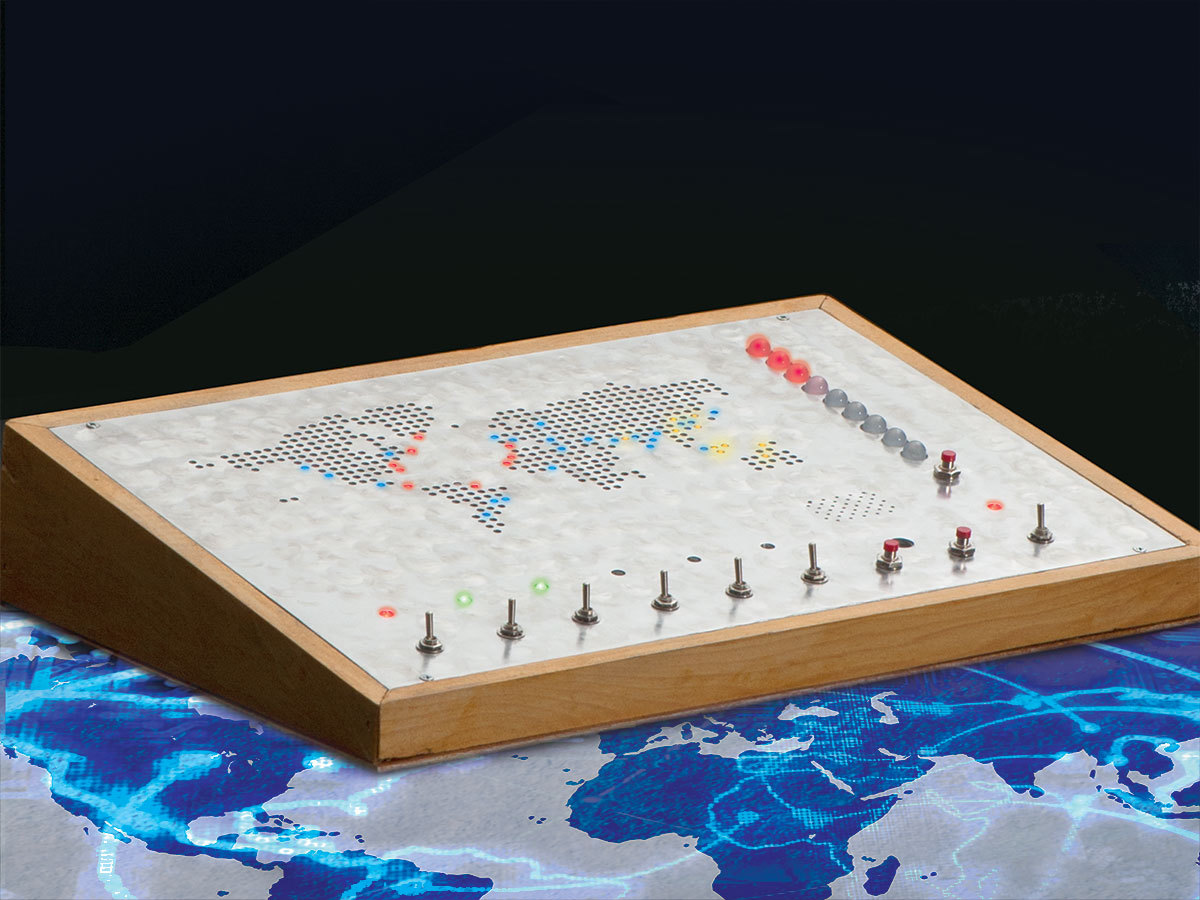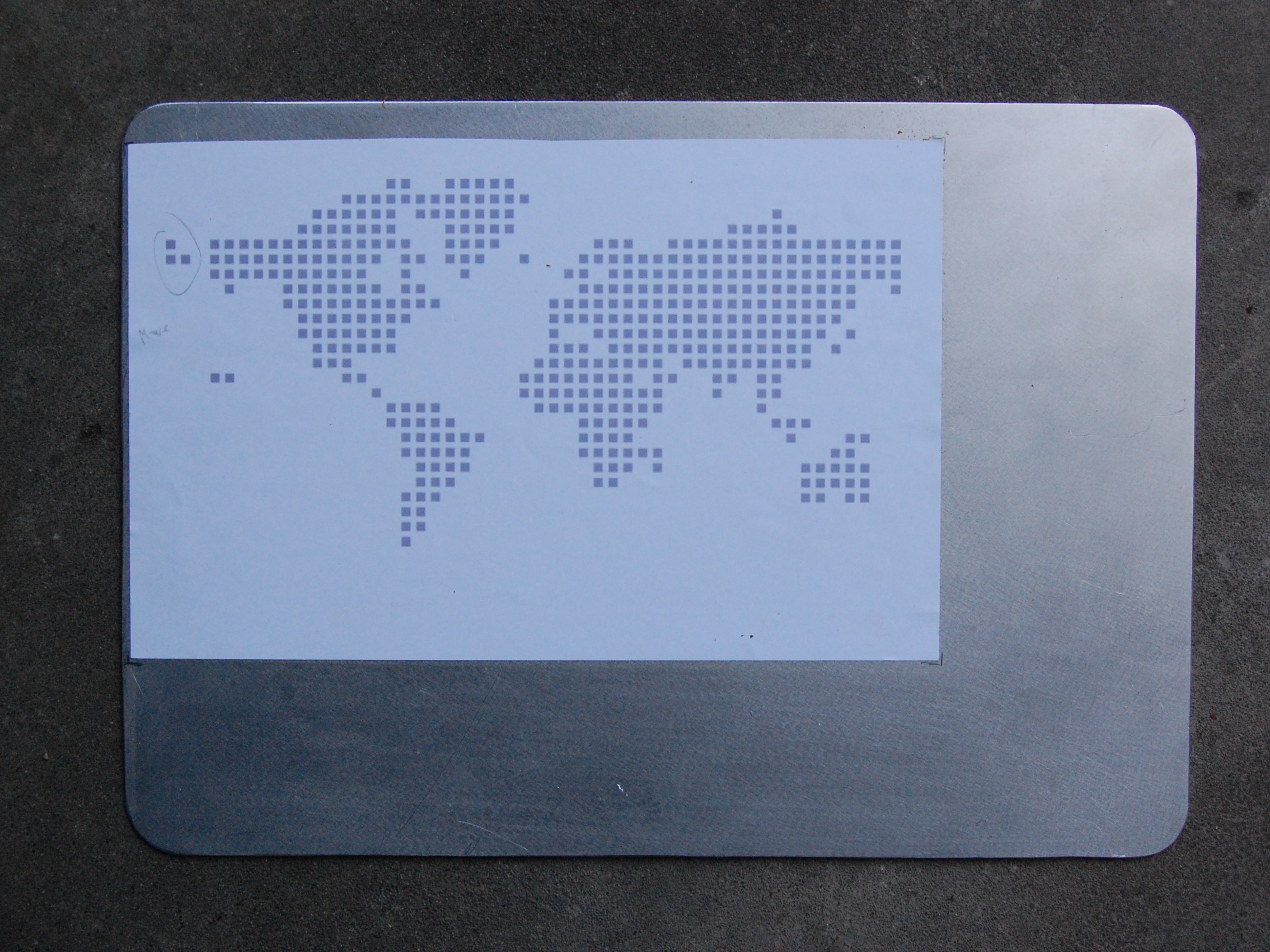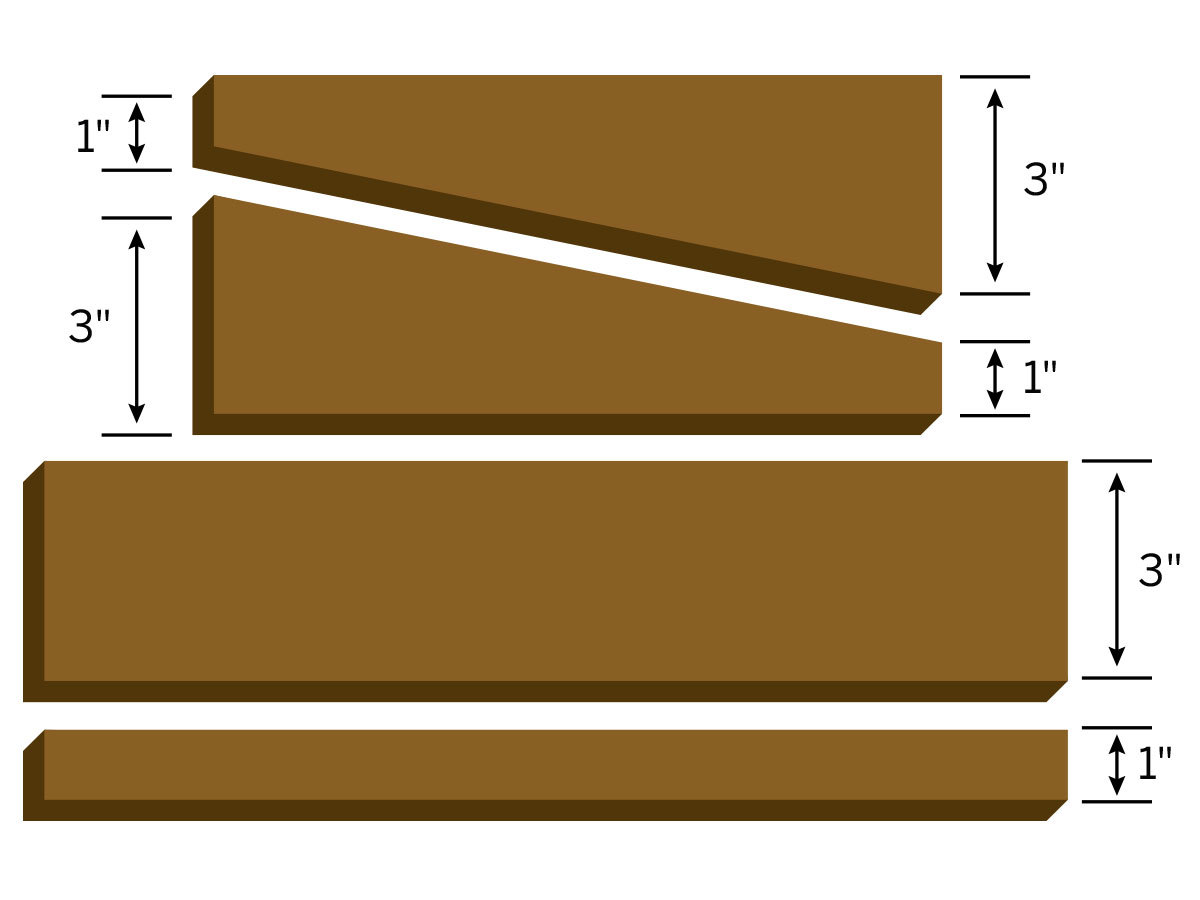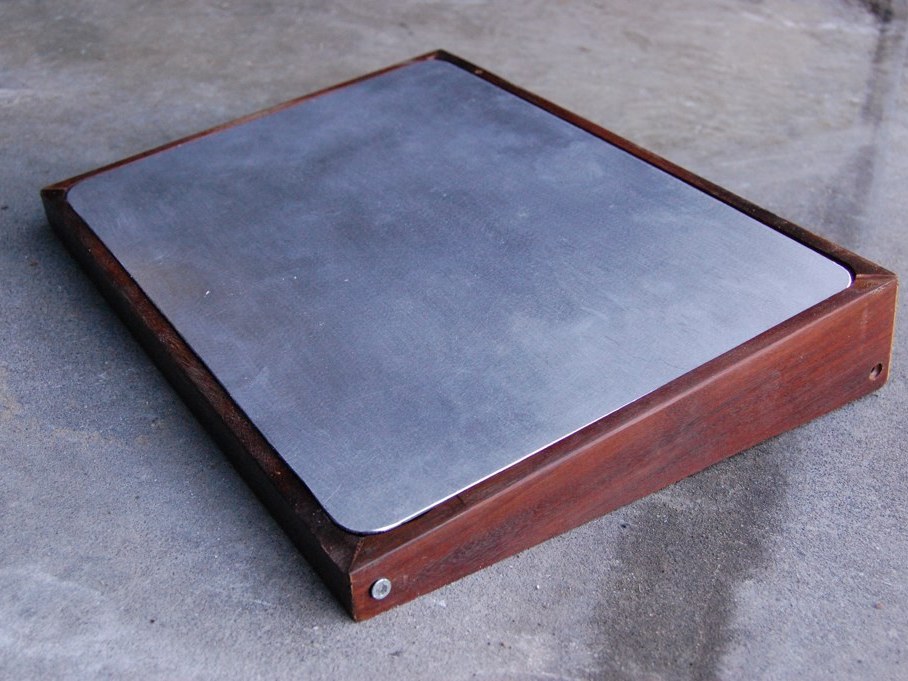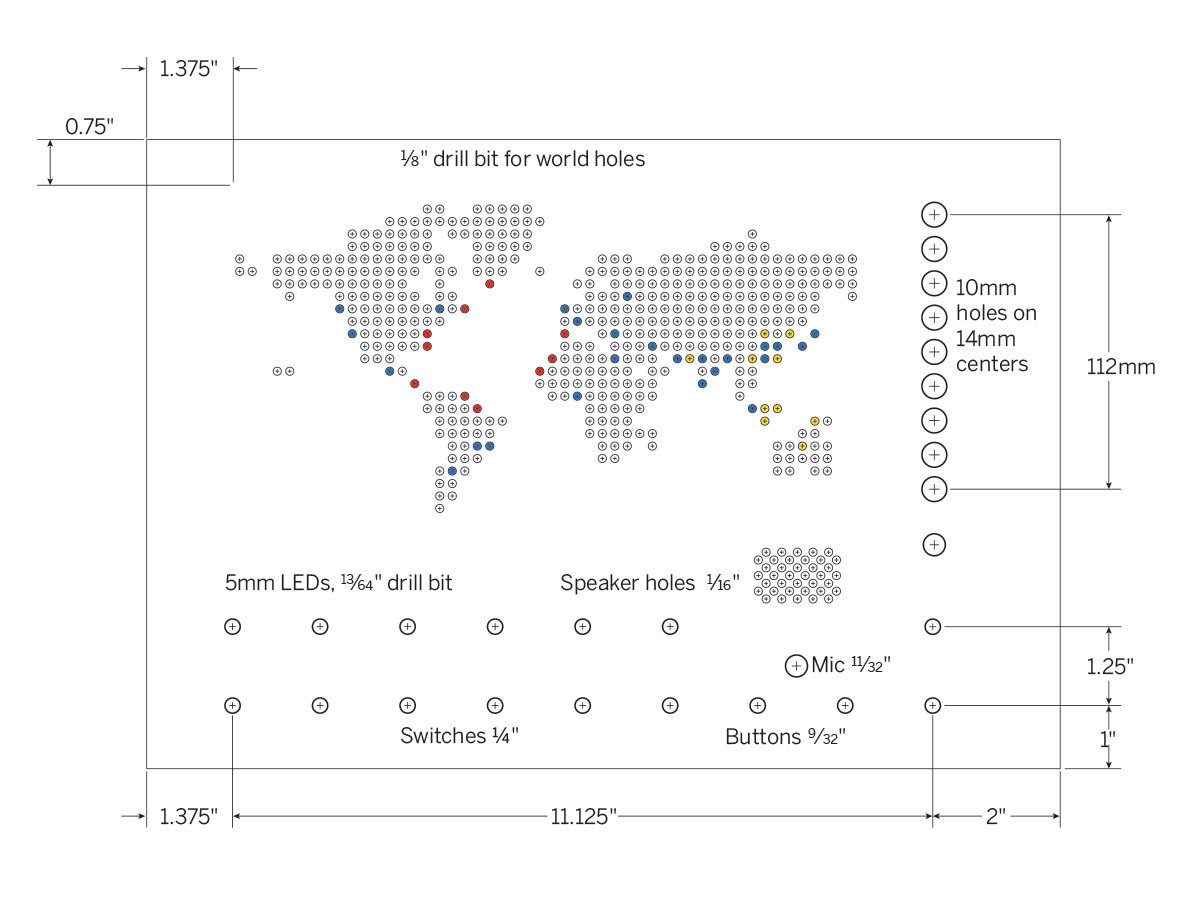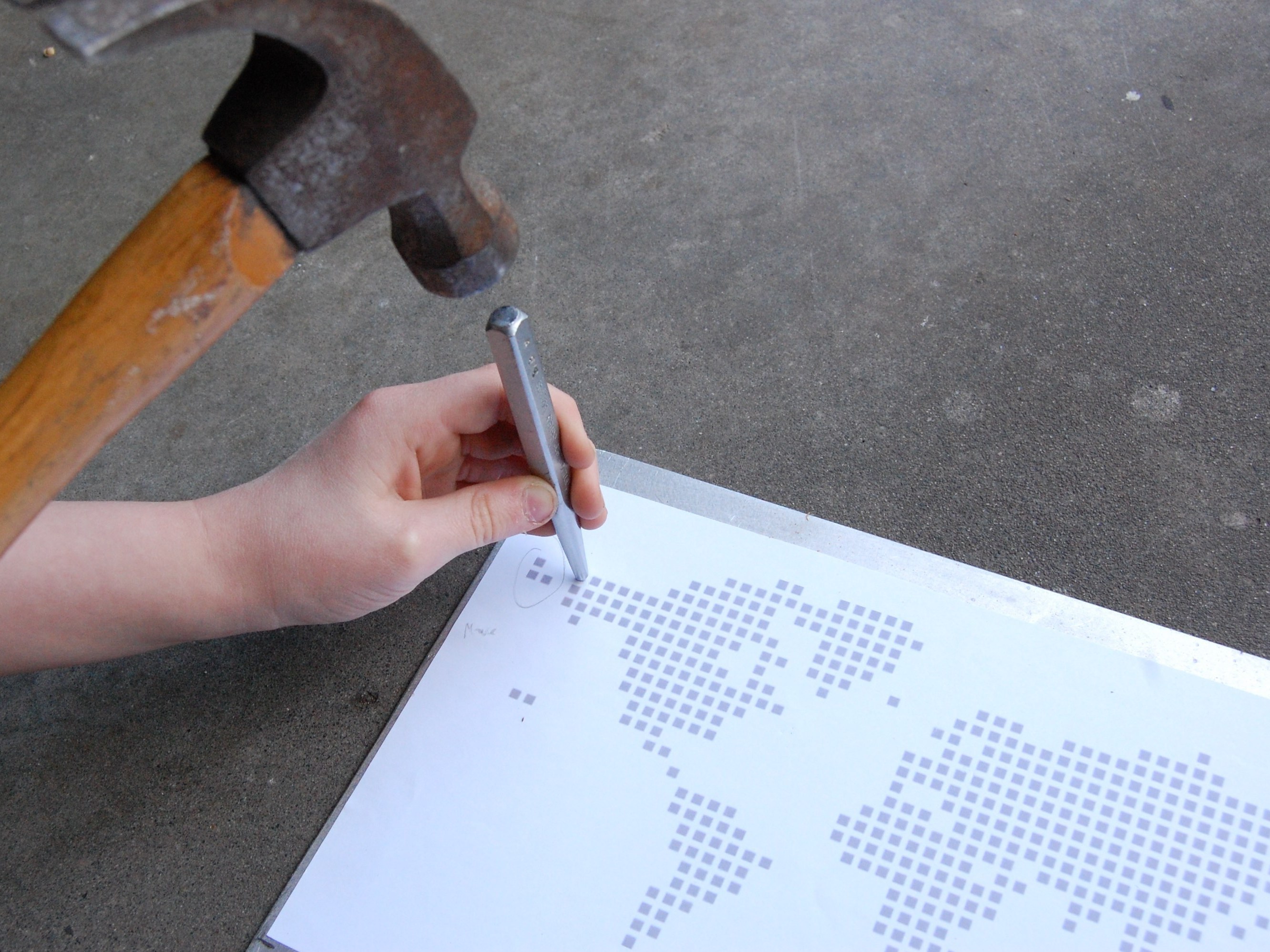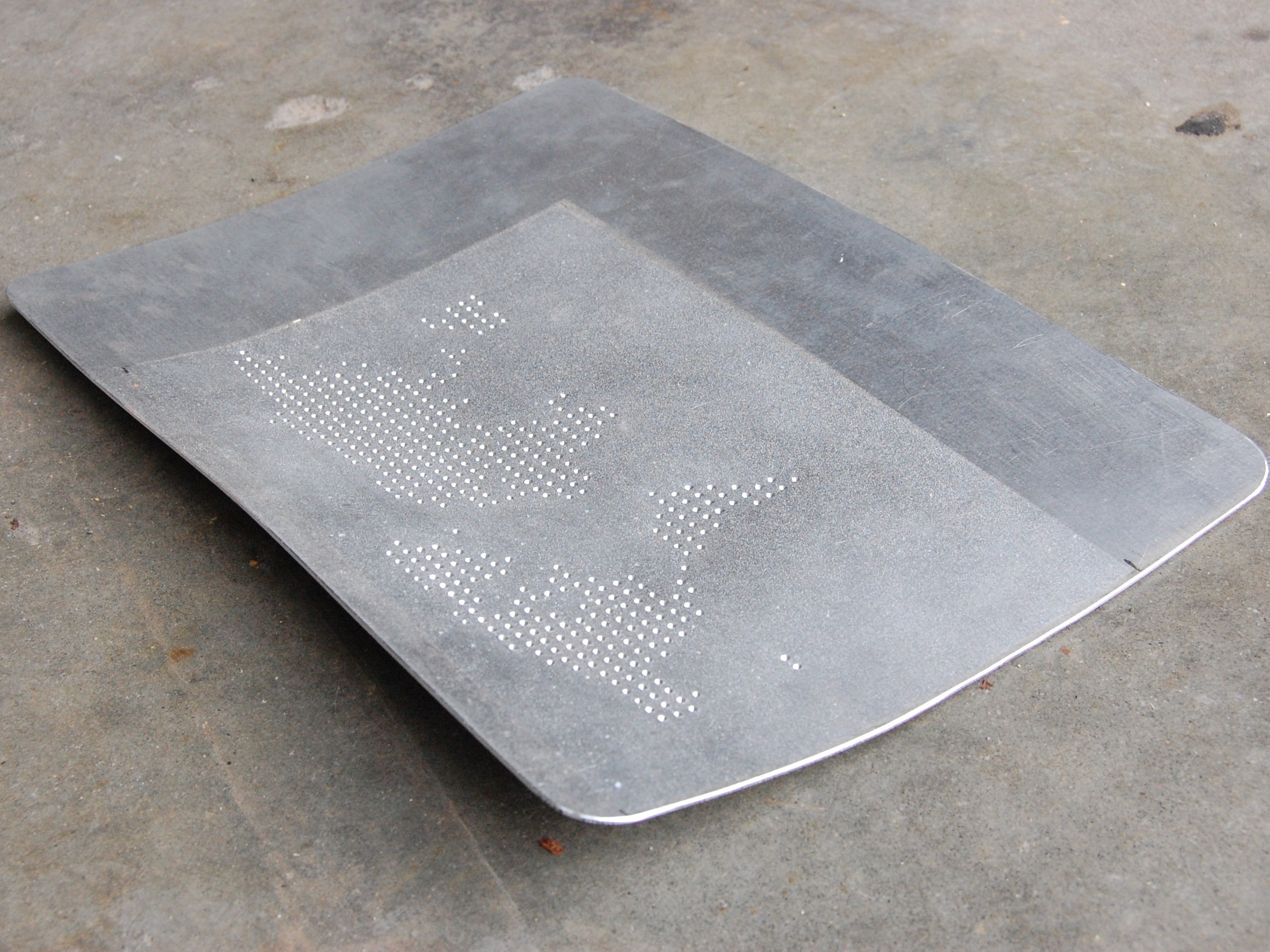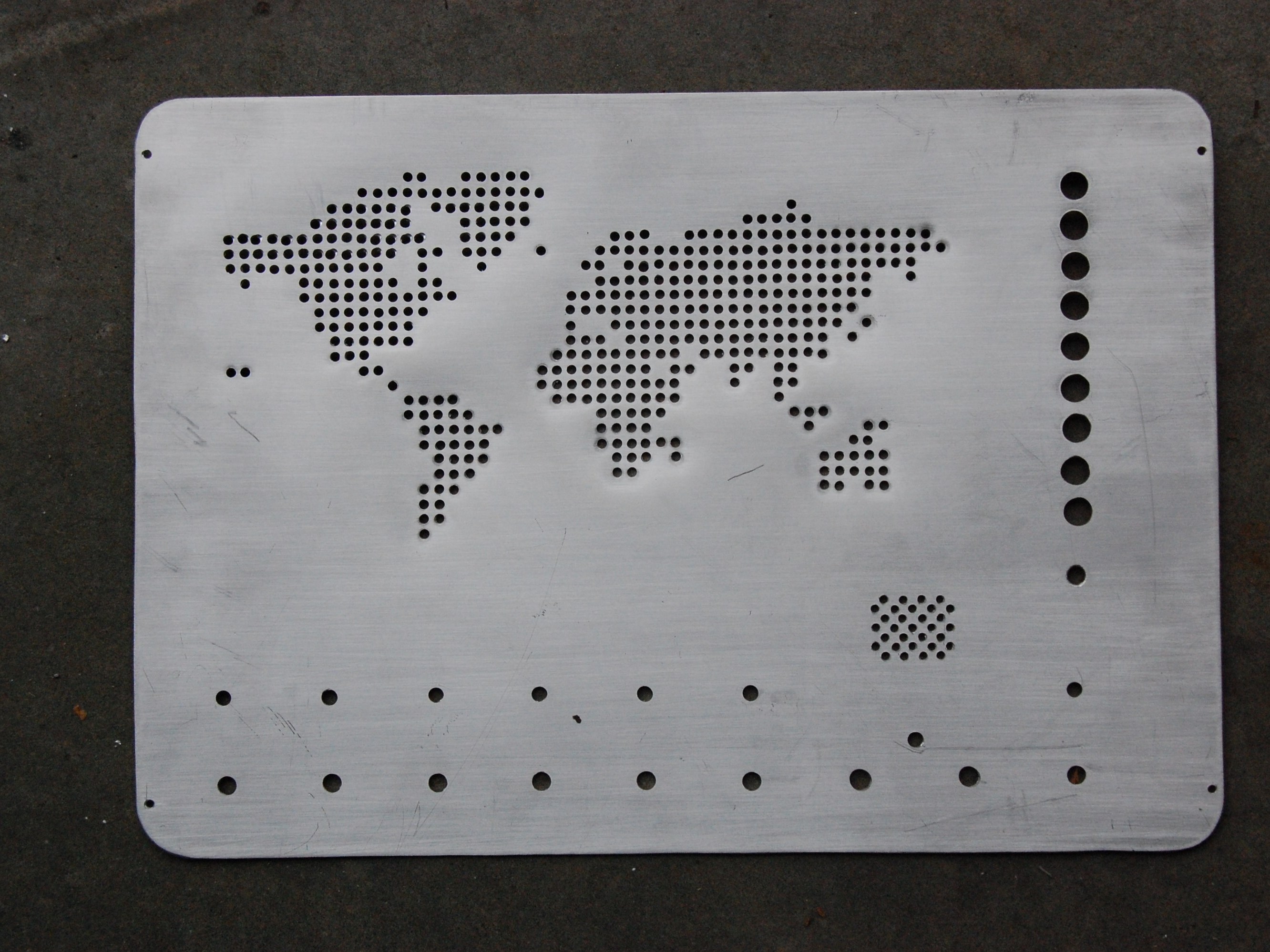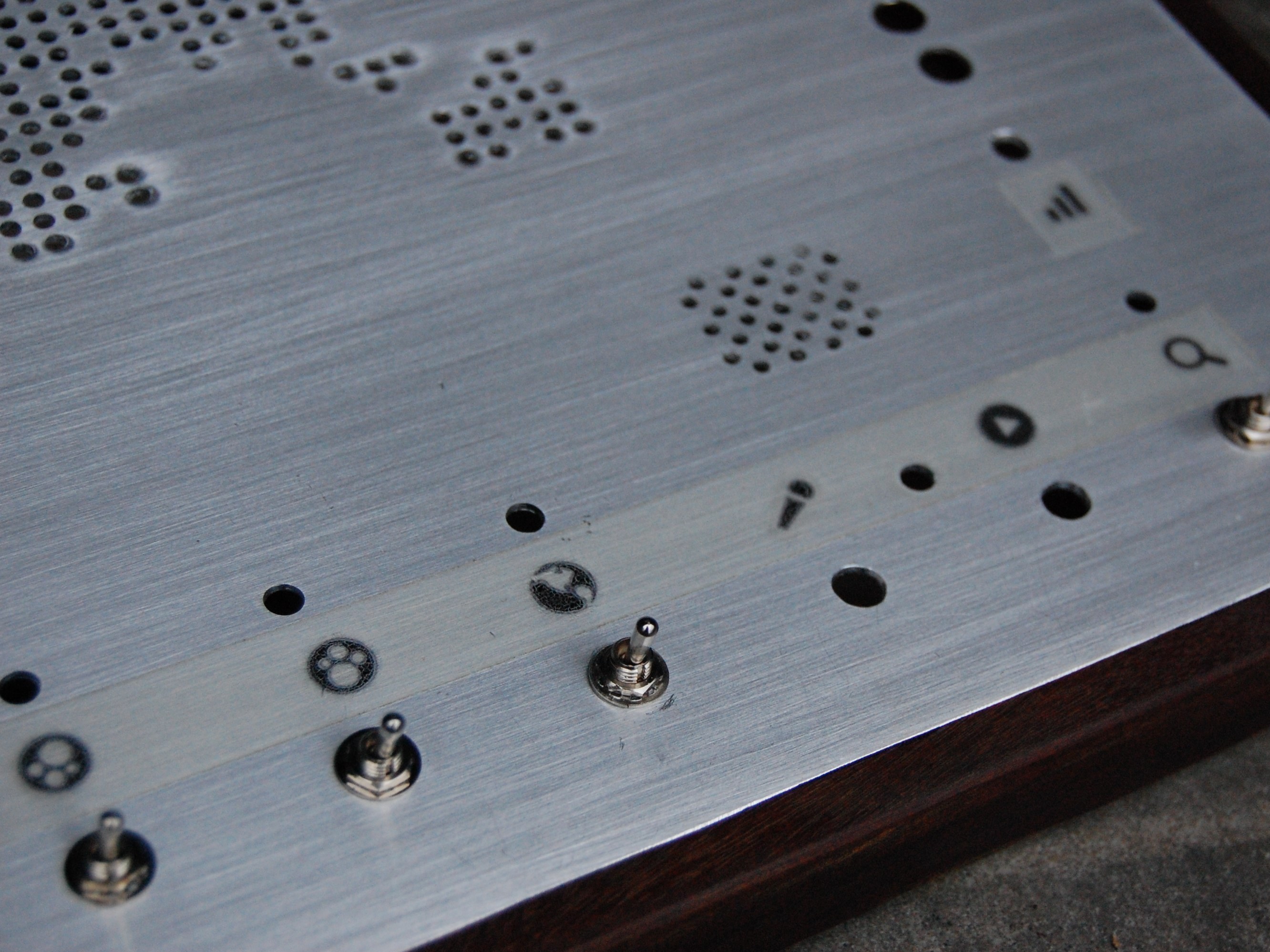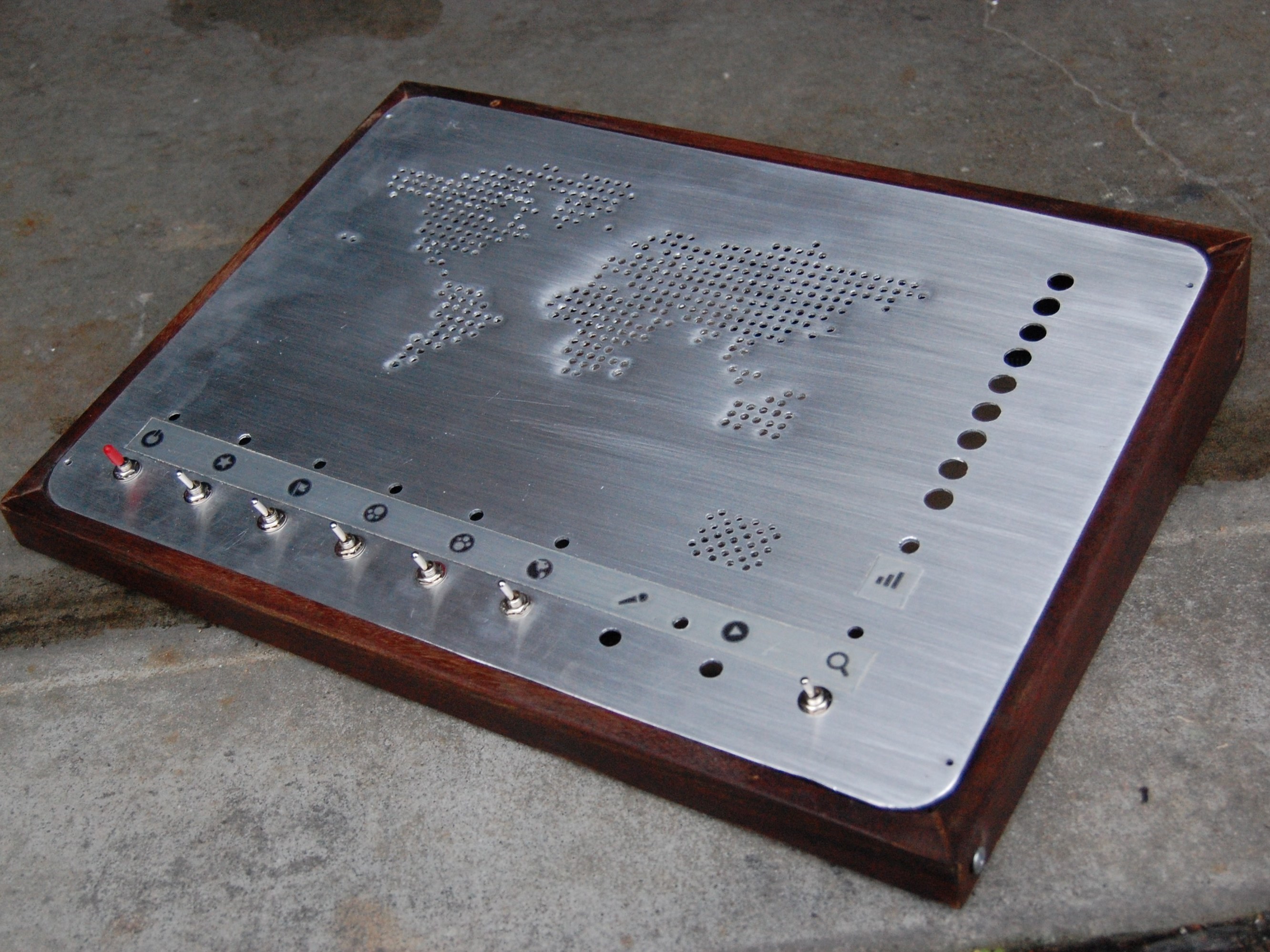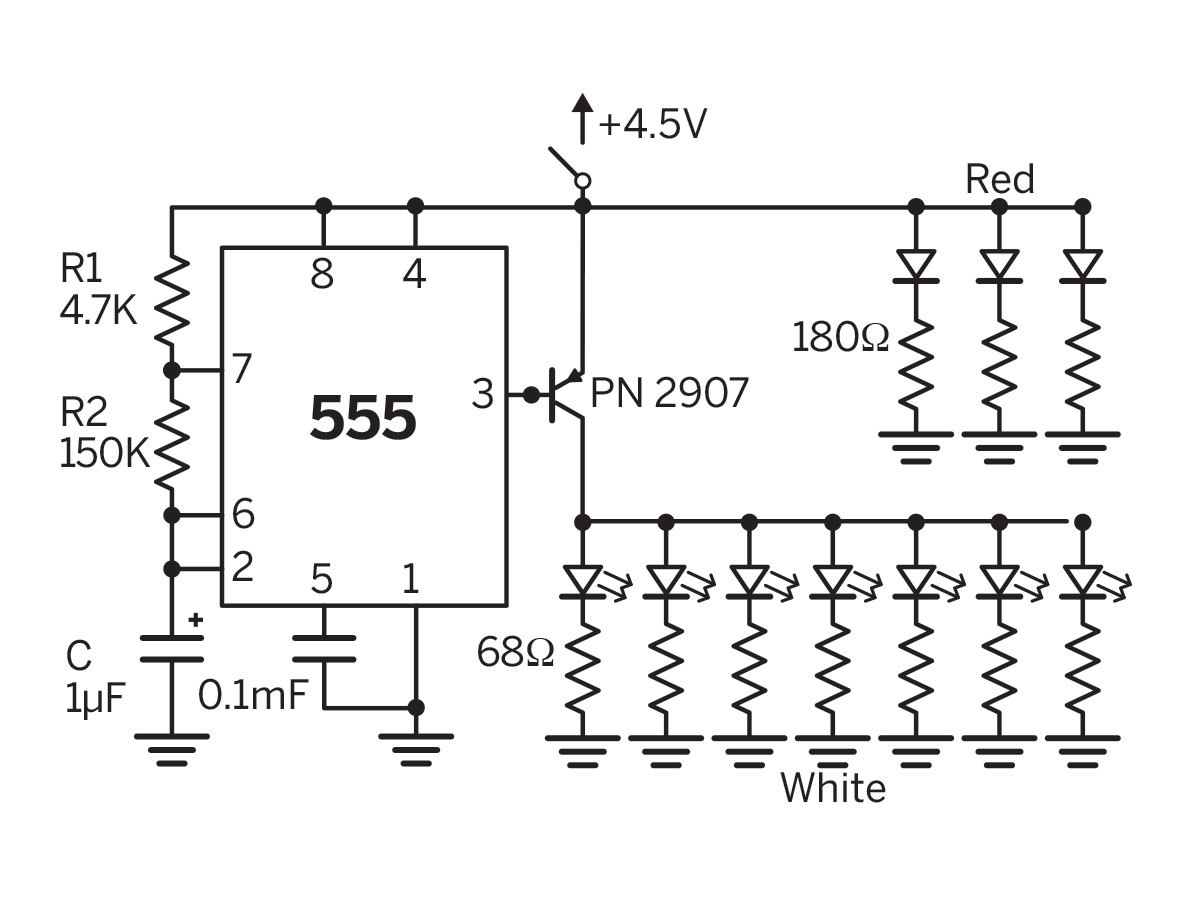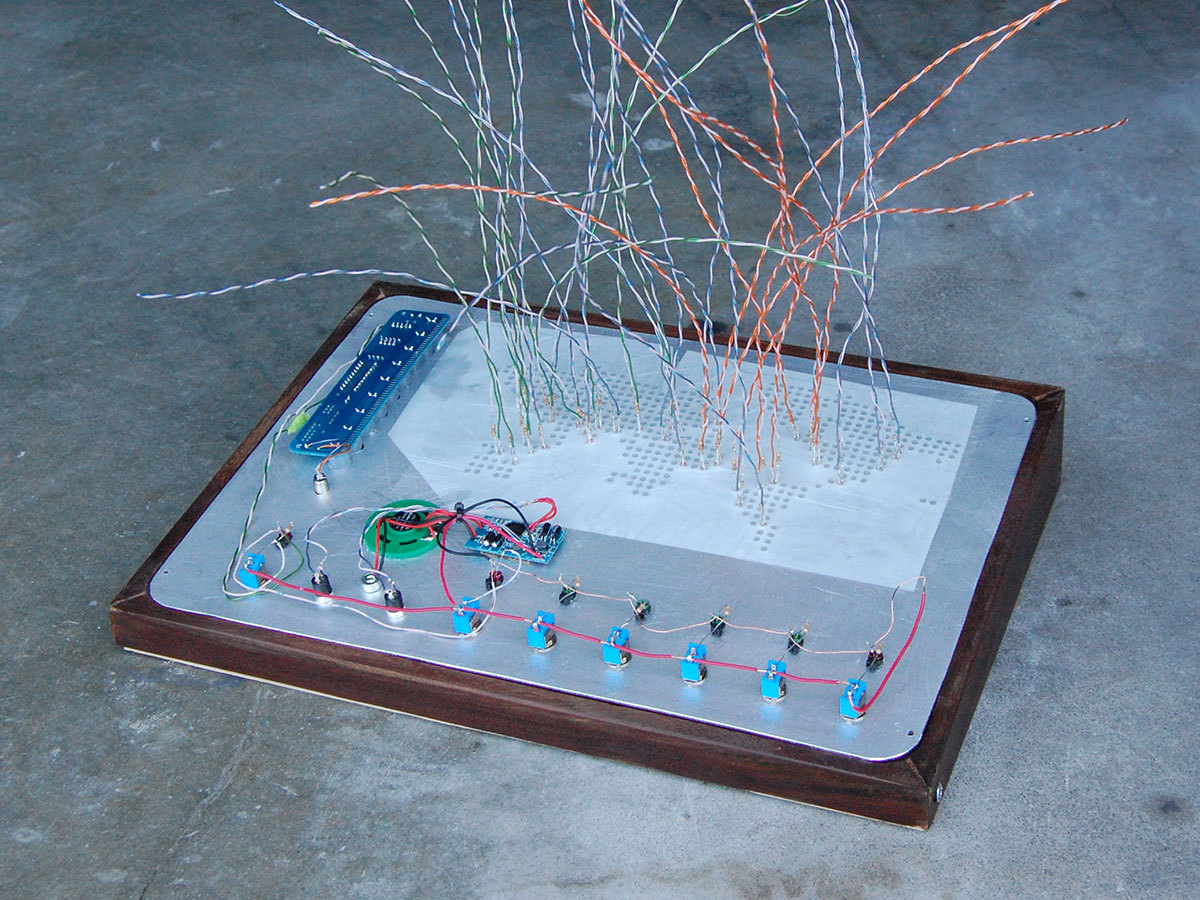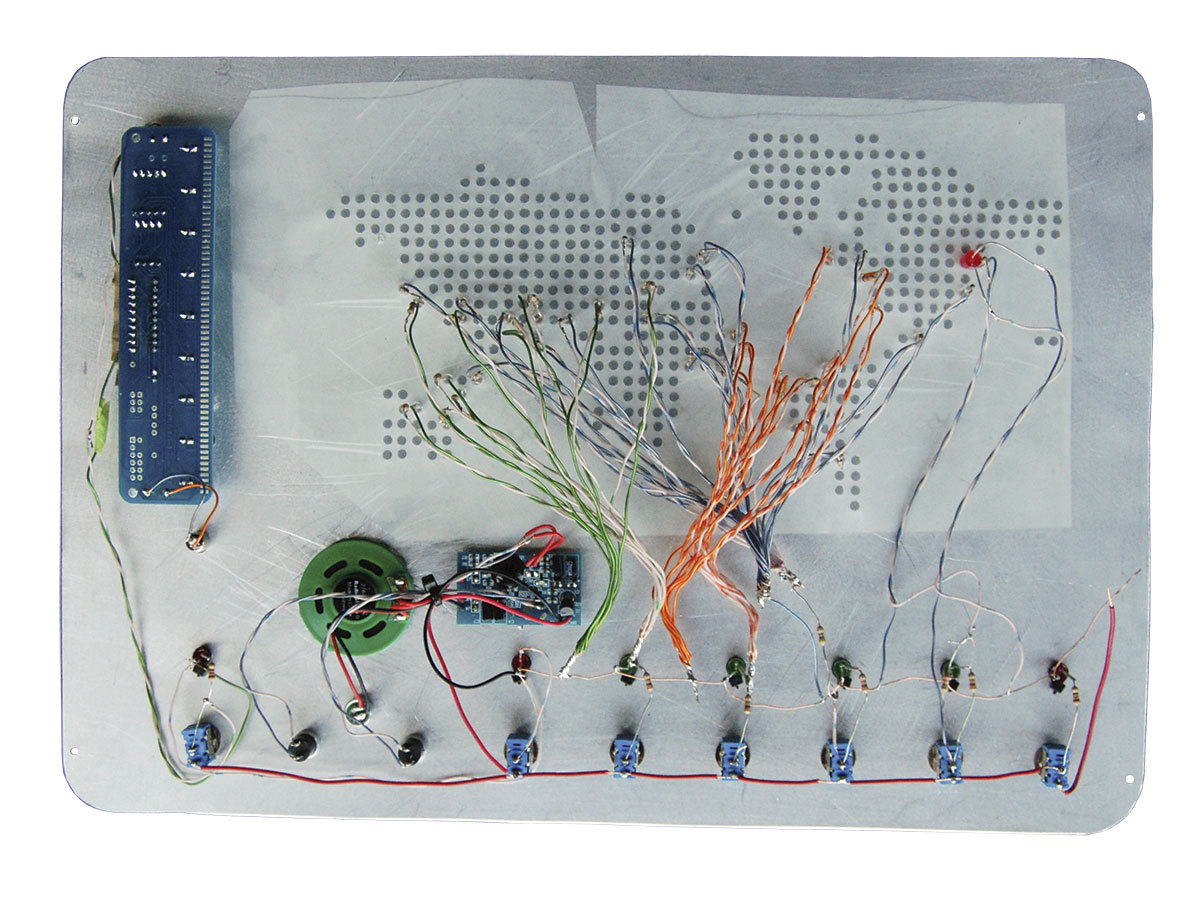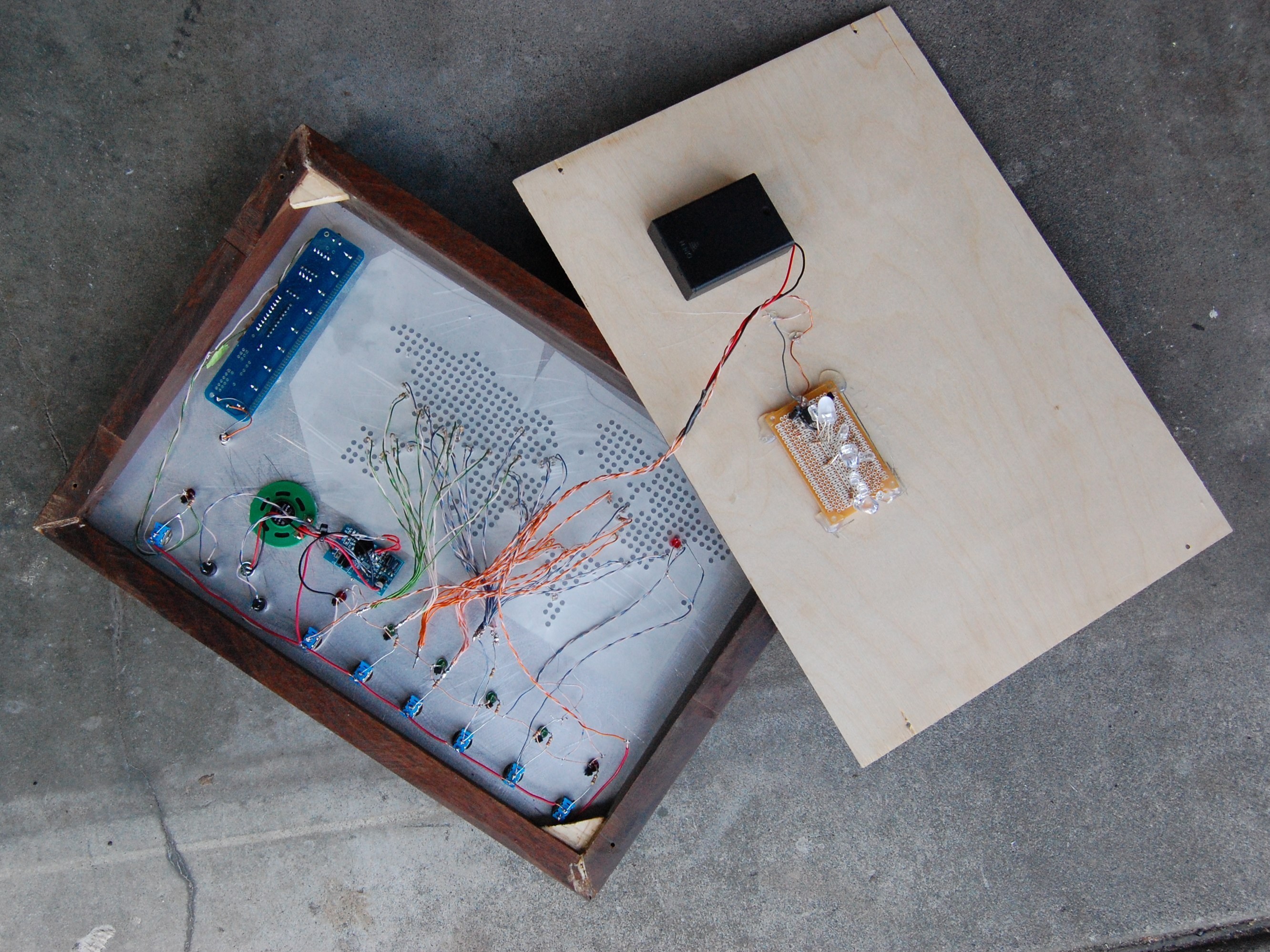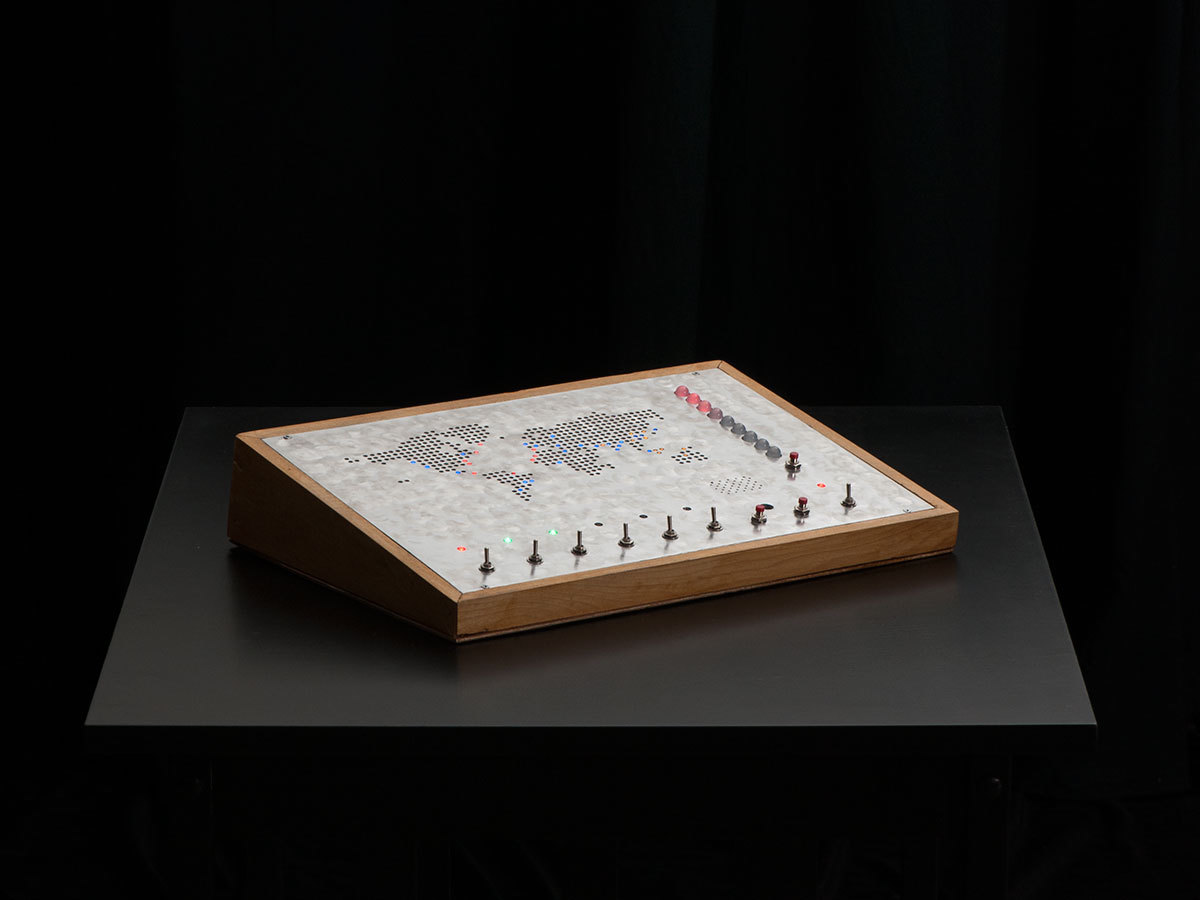My son Harlan and his pals love to play “Agents.” When he asked me if I could build him a control panel that had “a bunch of switches and random blinking lights,” I couldn’t have been happier.
I have to admit, I have a bit of a control panel fetish, and my favorite thing about electronics tinkering is making lights blink — which is just about all this device really does.
I immediately imagined some kind of backlit, brushed-metal map of the world, with a radar scanner and a variety of indicator lights and toggle switches that would allow him to com- municate with field agents, remotely dispatch weaponized sharks, or detect enemy activity.
The console employs a combination of readymade and custom circuits to achieve various lighting and sound effects. Ours is used for world domination, but the same basic panel would work equally well for tracking the migration of a swarm of Monarch butterflies, or detecting unicorns, if that’s what you need. Here’s how I built it.


